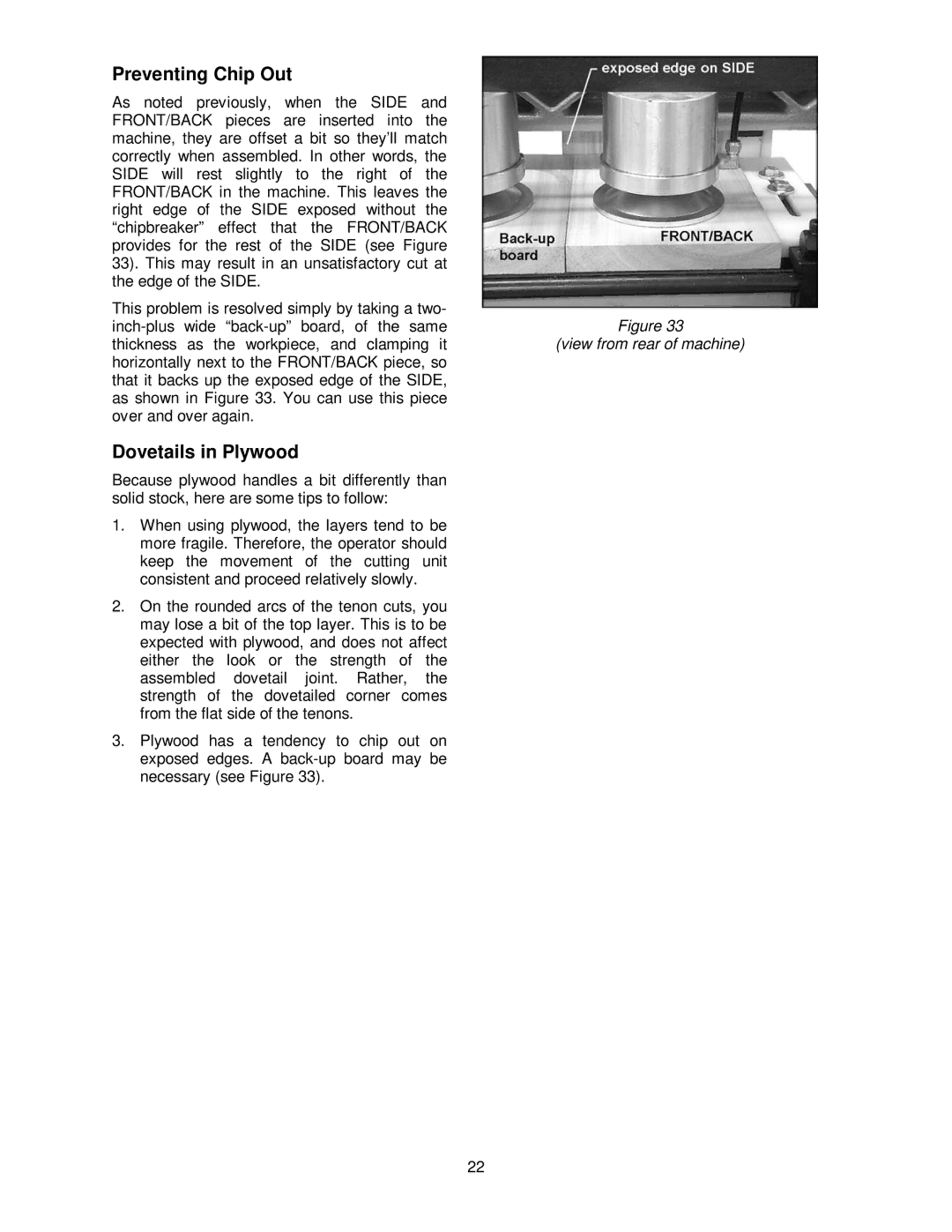
Preventing Chip Out
As noted previously, when the SIDE and FRONT/BACK pieces are inserted into the machine, they are offset a bit so they’ll match correctly when assembled. In other words, the SIDE will rest slightly to the right of the FRONT/BACK in the machine. This leaves the right edge of the SIDE exposed without the “chipbreaker” effect that the FRONT/BACK provides for the rest of the SIDE (see Figure 33). This may result in an unsatisfactory cut at the edge of the SIDE.
This problem is resolved simply by taking a two- | Figure 33 |
thickness as the workpiece, and clamping it | (view from rear of machine) |
horizontally next to the FRONT/BACK piece, so |
|
that it backs up the exposed edge of the SIDE, |
|
as shown in Figure 33. You can use this piece |
|
over and over again. |
|
Dovetails in Plywood
Because plywood handles a bit differently than solid stock, here are some tips to follow:
1. When using plywood, the layers tend to be more fragile. Therefore, the operator should keep the movement of the cutting unit consistent and proceed relatively slowly.
2. On the rounded arcs of the tenon cuts, you may lose a bit of the top layer. This is to be expected with plywood, and does not affect either the look or the strength of the assembled dovetail joint. Rather, the strength of the dovetailed corner comes from the flat side of the tenons.
3. Plywood has a tendency to chip out on exposed edges. A
22
